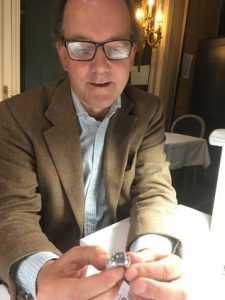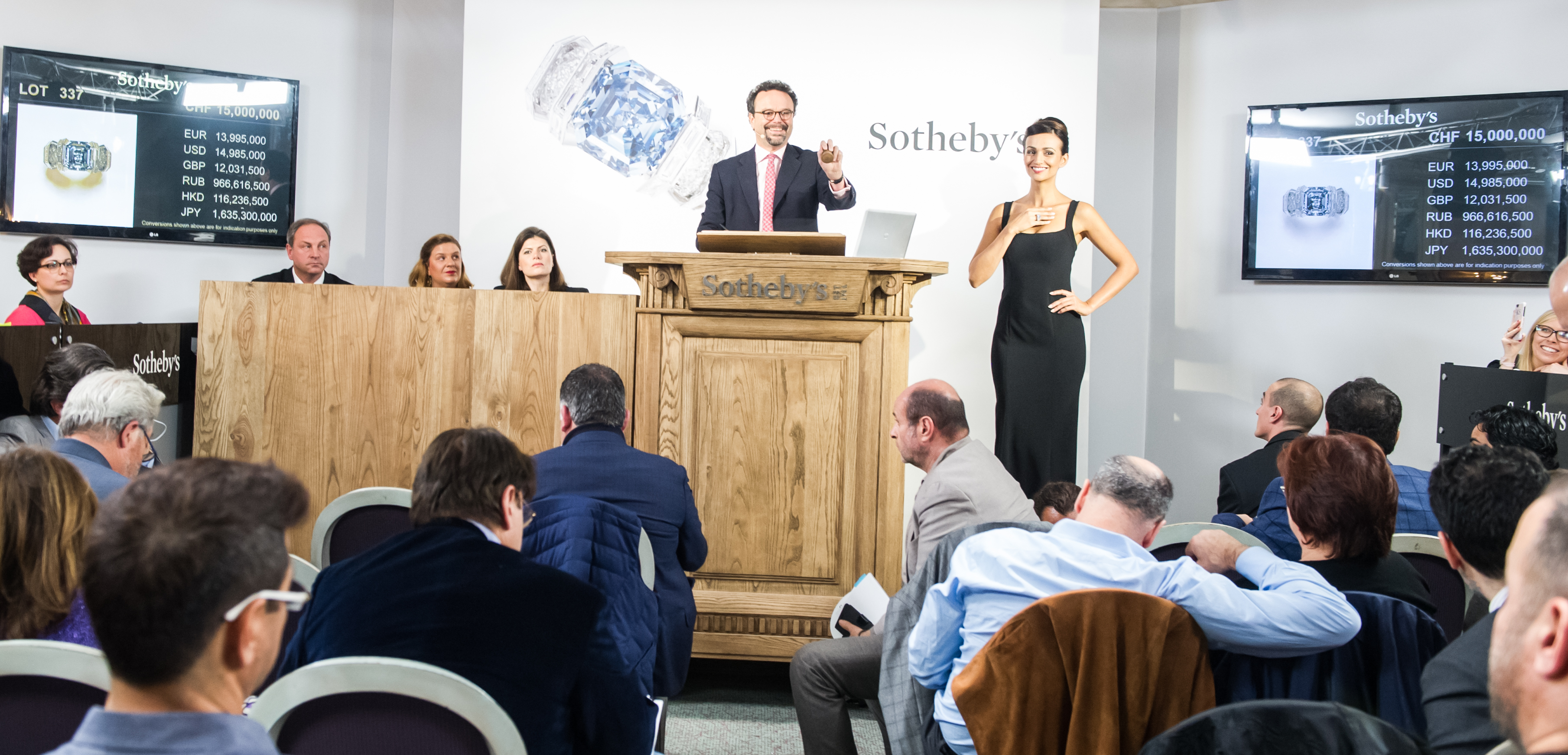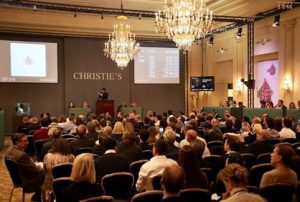By David Brough
A strong burst of applause rang out from the gilded crowd as an extremely rare 17.07-carat emerald-cut fancy intense pink diamond achieved an astonishing price of US$20.8 million at the Sotheby’s magnificent and noble jewellery auction on November 16.
After a flurry of vigorous bidding in a sumptuous room at the Beau-Rivage hotel, the pink diamond became the top lot, surpassing the star gem in the sale, the 8.01-carat square-cut fancy vivid ‘Sky Blue Diamond’ set in a Cartier ring.
In another strong result for rare pink diamonds, a 9.1-carat fancy vivid pink diamond at Christie’s Geneva sale at the Four Seasons Hotel des Bergues on November 15, sold for US$18.2 million, the second highest price for a pink pear-shaped diamond sold at auction.
Not that the Sky Blue Diamond disappointed. It achieved $17.1 million, comfortably within its pre-sale estimate of $15-$20 million, going in the end to a telephone bidder.
It achieved an increase of over 30% on the US$12.8 million it had fetched for Sotheby’s in 2012.
The Year of the Blue Diamond
2016 was billed as the Year of the Blue by cognoscenti of the top tier of the diamond market.
In the Christie’s Geneva auction in May, the stunning 14.62-carat ‘Oppenheimer Blue’ fetched $57.5 million, a world record price for any diamond sold at auction, after a ping pong match between two telephone bidders that went on for more than half an hour.
The Oppenheimer Blue, which once belonged to a member of the Oppenheimer family who owned De Beers, overtook the world record price achieved in November 2015 by the 12.03-carat ‘Blue Moon’, which went to a Hong Kong property tycoon and still retains the world record price per carat for any diamond sold at auction (US$4.1 million.)
Why Do Blue Diamonds Achieve Such High Prices?
What is the allure of such diamonds and why do they achieve such high prices? Rarity and beauty. Provenance helps – a unique history of a stone, say, ownership by royalty, the aristocracy, or a celebrity, can help.
Magnificent diamonds are seen as highly collectable because they are unique. If held securely for several years, the chances are – based on historical precedent – that they will rise in value.
This is especially true of natural colour diamonds. The pinks and blues are amongst the most sought after, because of their beauty. Arguably the most revered diamonds are the red ones. One of the most famous is the 5.1-carat Moussaieff Red, the world’s largest known red diamond, the rarest colour of them all, discovered by a farmer in Brazil in the 1990s.
It is believed to belong to Moussaieff Jewellers, one of the most prestigious jewellery houses in the world. The market value of the Moussaieff Red today would be extraordinary, and possibly would challenge the Oppenheimer Blue if it ever came to the auction market.
At a talk at the GIA campus in London in early November, David Warren, senior international jewellery director at Christie’s, said the market for natural colour diamonds had accelerated upwards from the 1970s.
Rare diamonds are a hedge against global uncertainty, and perhaps will fare even better as investments since the surprise win of Donald Trump in the U.S. presidential elections on November 8, diamond market experts say.
Rare diamonds can be seen as safe-haven investments and as a hedge against risks of inflation.
Gemstones also have the advantage of being portable, unlike other assets such as real estate.
If you ever have to suddenly start a new life in another country, it would certainly help to have a few beautiful and rare pink and blue gems in your pocket!




So Happy to have experienced the glamour and excitement of an international diamond auction in Geneva earlier this year. Never been to Switzerland before, but would certainly like to go back !